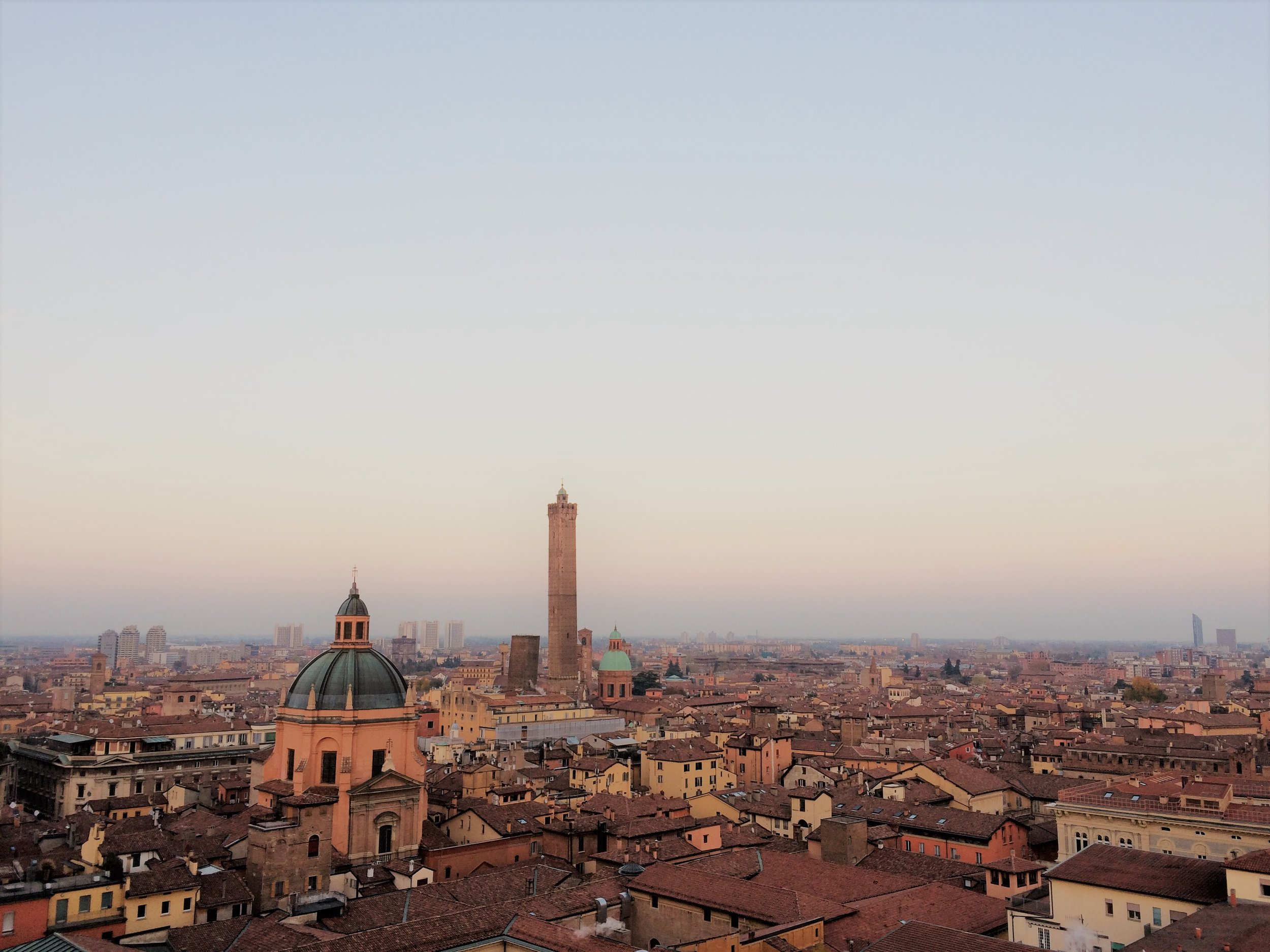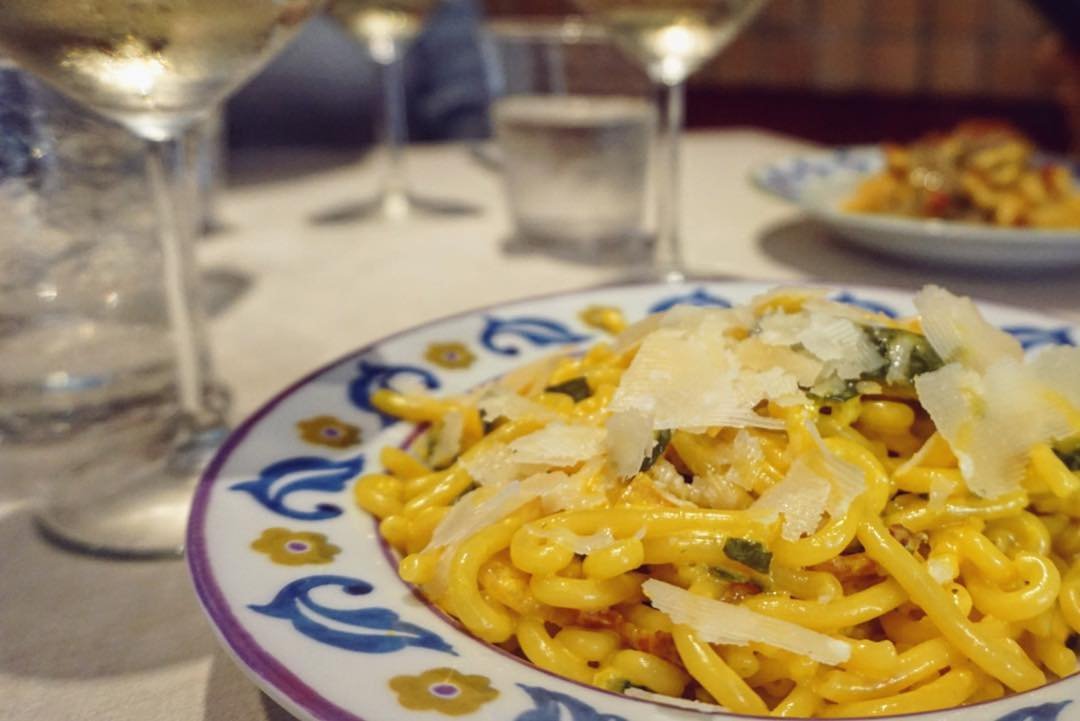We love Bologna ❤️
Most visitors to Il Bel Paese tend to overlook Bologna. While it might not be as famous as say Florence, Rome or Venice, the capital of Emilia-Romagna is food destination. In fact, it’s even nicknamed La Grassa (the fat one)… for good reason!
We love la cucina contadina Toscana, but the cuisine of the Emilia-Romagna is fit for kings with 42 DOP (origin protected) products! And dishes like lasagna Bolognese, tortellini al brodo, mortadella and tagliatelle al ragu’ are unparalleled items for decadent indulgence. Quite honestly, one would probably get gout living solely on la cucina Bolognese.
(psssst! Interested in a culinary walk in Bologna? Book our La Grassa Tour. We'll delight in a handful of Emilia-Romagna's 40+ consortium protected DOP traditional products and learn (and savor) Bologna's world-loved fresh pastas.
But this post isn’t about Bologna’s classics - those hit dishes that everyone knows and loves. This post is our favorite must-have foods that are a little more left-field and unexpected, but not to be missed!
Gramigna smothered rightly in parmigiano, saffron and guanciale. Photo: Coral Sisk/Curious Appetite
Gramigna
Gramigna is a type of squiggly-shaped, tubular rounded pasta that takes its name from the Italian word for Bermuda or Couch grass.
Traditionally it was made by rubbing a dough of durum-wheat flour, type 00 flour and eggs over a large-hole grater, but this soon gave way to home pasta presses mounted on walls or tables.
Outside of Italy, gramigna is difficult to find. So why should you seek it out when you’re in Bologna? The shape has an affinity with its traditional sauce—a sausage ragù or gramigna alla salsiccia. In summer, gramigne are also often served in a light tomato sauce with plenty of basil.
Try gramigna at Trattoria Bertozzi, Via Andrea Costa, 84/2/D.
Passatelli (breadcrumb and parmigiano-reggiano pasta) showered in local truffle. Photo: Coral Sisk/Curious Appetite
Passatelli
If you’ve ever seen passatelli, you could be forgiven for thinking you’re looking at the ugliest noodles to ever grace the dinner table. But passatelli aren’t your typical pasta. Instead these rough little curls are made with breadcrumbs combined with eggs, parmesan cheese, nutmeg and lemon zest. The dough is then passed through a potato masher to achieve its cylindrical shape in a method that’s similar to the German stalwart Spätzle! In fact, the name passatelli comes from Italian for “going through” as in going through the masher.
Passatelli mightn’t sound luxurious, but this noodle was usually reserved for special occasions: Christmas Eve, in particular, but also births, baptisms or weddings. The ‘poor’ version was made with mostly stale bread, while the ‘wealthier’ version was packed with the expensive Parmigiano Reggiano cheese.
These days, the noodle is commonly served with a meaty broth in what is known as passatelli in brodo (broth). That way it warms the belly and the soul on a cold winter's day.
Try passatelli at: Grassilli, Via dal Luzzo, 3.
Zuppa imperiale. Photo: La Cucina Italiana.
Zuppa Imperiale
Bologna loves its soups! The second one to grace our list is another Christmas favorite with northern European notes. Zuppa Imperiale was thought to have evolved from the Austrian krinofel soup that was introduced into Emilia-Romagna with Austrian-born Maria Luigia, who was the wife of Napoleon I and became the Duchess of Parma, hence the “imperial”.
Like passtelli in brodo, it features bread - this time a fluffy loaf made with flour, eggs, butter, nutmeg and Parmigiano Reggiano cheese, baked, cut into cubes and cooked in a fragrant meat stock.
Try Zuppa Imperiale at Le Sfogline, Via Belvedere, 7. Call ahead and pick up when freshly made and make at your B&B or bring back home if you can.
We taste torta tenerina and torta di riso on our Gourmet La Grassa Tour of Bologna!
Torta Tenerina
This decadent fondant cake is native to Ferrara, where the locals fondly call it “Torta Taclenta” (a dialect word for sticky) thanks to its gooey chocolate centre. Since we are chocolate lovers we had to include it!
Its actual name Torta Tenerina translates to “tender cake” in English and hails from its particularly evocative backstory. King Victor Emmanuel III of Italy and Elena Petrovich from Montenegro married on October 24, 1896 after meeting at Teatro La Fenice in Venice at the International Art Exhibition. Both said it was love at first sight, and the queen became known as the bride with a tender heart. This cake, which is also known as the Torta Montenegrin or Torta Regina del Montenegro, was invented in her honor.
It’s a simple confection, hardly more than an inch thick, and rarely embellished with more than a generous dusting of powdered sugar. But inside, it is deliciously soft, giving any flourless chocolate cake you’ve tried in the past a run for its money!
Try Torta Tenerina along with Bologna’s torta di riso (rice pudding cake!) on our La Grassa food tour!!
Mortadella adorning a pizza at Berbere in Bologna. Photo: Coral Sisk/Curious Appetite
Mortadella
Bologna is home to mortadella or baloney to Americans. A peppery pork sausage mixed with hand-cut cubes of lard, mortadella’s roots are Ancient Roman and its name is thought to come from ‘murtatum’, which means meat finely minced in a mortar.
There’s loads that goes into making the incredible aromatic, silky savory mortadella of old (strategic meat and organ selection, lard washing, fresh spices, cooking, grinding etc). If you talk to most Italians about the decline of their food products, you’ll commonly hear nostalgic waxing of fresh sliced aromatic mortadella panini for lunch or snack as a child. Most mortadella nowadays smells like plastic and tastes like rubber compared to the olden-days stuff. So if you’re in Bologna, keep an eye out for the handmade stuff at artisan butchers!
Try the best mortadella at Pigro, Via de' Pignattari, 1b.
A smattering of charcuterie on our La Grassa Tour in Bologna
Salame Rosa
Mortadella’s less famous brother, Salame Rosa or ‘Pink Salami’ is made from lean pork shoulder cut with a very sharp knife, mixed with lard and seasoned with salt, pepper and garlic.
Despite its name, it is not salami as we know it (i.e. aged sausage, with pieces of fat clearly separated from the dark red meat) but is almost a halfway between a top quality ham and mortadella. The surprising flavor is full of personality – it reminds me of roasted meat – and is mild. Since it is relatively lean, you can savor the taste of the meat combined with the smoothness of the fat.
Salame Rosa is hard to find these days, but if you come across it, it’s well worth a taste.
Try Salame Rosa (and amazing mortadella) on our La Grassa food tour!!
Crescentine fritte taken at Trattoria Collegio di Spagna by Coral Sisk/Curious Appetite
Crescentine
A flavourful Bolognese bread made with chopped prosciutto that dates back to the days when bakeries also sold cured meats and the leftover dough would be baked with bits of meat as a simple, but filling breakfast for the baker and his family. They also come fried and this is how we love them!
Crescentine are sometimes conflated with Modena’s tigelle, which takes its name from the terracotta discs once used for their cooking. The term "tigella" (tigèla) probably derives from the Latin verb "tegere" or to cover.
This Bolognese treat, baked or fried, is the ultimate apertivo food. After cooking, crescentine are cut in half when they're still very hot and filled with various toppings. The most traditional is pesto modenese: a mixed sauce made with chopped pork lard, rosemary, garlic and a generous sprinkling of Parmigiano Reggiano.
But over time, crescentine have been subject to less traditional but very tasty unions like cold cuts, cheese, jams or chocolate creams for dessert.
Try crescentine on Via Collegio di Spagna, polpette e crescente at the Mercato delle Erbe or Vag in Ufezzi, Via de' Coltelli, 9/C.
Mostarda. Photo: Curious Appetite
Mostarde
Mostarda is a 17th century northern Italian condiment that has very little to do with what we traditionally think of as mustard. Only a small amount of mustard oil is used as a base note in mostarda, but the dominating flavour is candied fruits or vegetables, in this case, fruits.
While we might think the name comes from the word mustard, it actually stems from a Latin term of the Middle Ages, mustum ardens, “grape juice (must) that burns,” a term first used in the Middle Ages by French monks for the mustard they made. The Italian word for mustard is “senape”.
Intrigued? One of the best ways to try mostarda is in raviola alla mostarda. A cross between a cookie and a scone, these delightful triangles of shortcrust pastry are filled with a jam made of pears and tangerines.
Try mostarda (and bollito) at: Da Bertino, Via delle Lame, 55.















